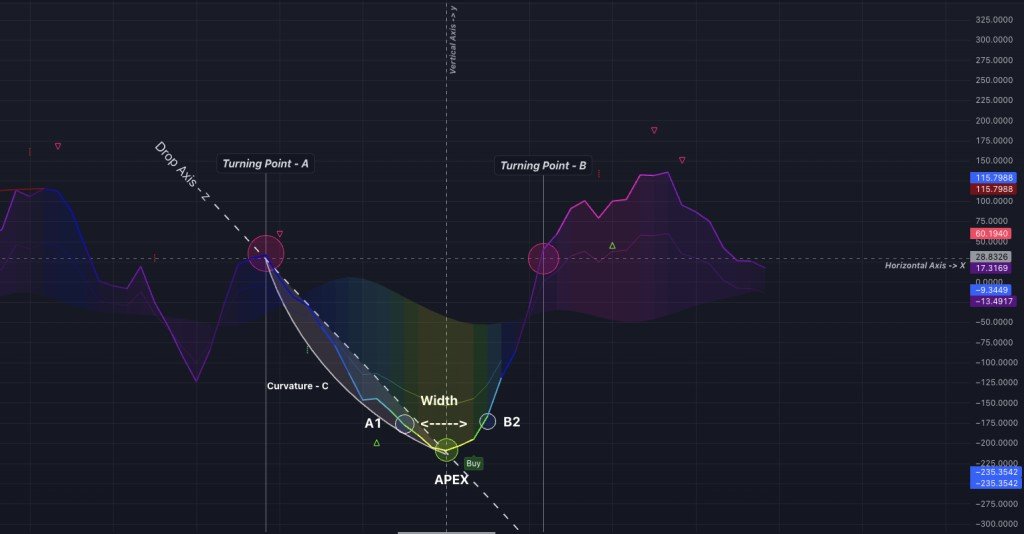Analyzing Concave Down Segments of the Sinusoidal Curve
I am working on analyzing a specific segment of the sinusoidal curve, particularly the portion that is concave down. For this segment, I have two primary measurements I would like to determine:
- *The vertical curvature C from the local maximum (turning point) of the sinusoidal curve to the vertex of the parabola on Drop axis Z that best fits this segment.*
- *The horizontal distance, or width, between the two points (A1 and B1) on the sinusoidal curve that are immediately before and after the vertex of this fitting parabola.*
Could someone please provide guidance on how to compute these measurements, or suggest a method or transformation that simplifies this analysis? Any help or references to relevant literature would be greatly appreciated.

Answer
Answers can only be viewed under the following conditions:
- The questioner was satisfied with and accepted the answer, or
- The answer was evaluated as being 100% correct by the judge.
 Kav10
Kav10
2.1K
-
Any off site user interaction is strongly prohibited and may result in suspension of your accounts.
-
@Andrius, like I said the website does not allow off site interaction. If you need help with coding this, you can go to my profile, click on “Ask direct question” and create the question so I can help.
The answer is accepted.
Join Matchmaticians Affiliate Marketing
Program to earn up to a 50% commission on every question that your affiliated users ask or answer.
- answered
- 1401 views
- $20.00
Related Questions
- Find the derivative of the function $f(x)=\sqrt{\sin^2x+e^x+1}$
- Determine the surface area of a ball, rotating a function about $x$-axis.
- How do you go about solving this question?
- Prove the trig identity $\sec x- \sin x \tan x =\frac{1}{\sec x}$
- Prove that $\frac{1}{1-\sin x}-\frac{1}{1+\sin x}=2 \tan x \sec x$
- Geometric Representation Question
- Direction of forces acting on points A, B and C
- Find the real solution of the equation $x^{2}-10=x \sin{x}$.


The offered bounty is a bit low.
It's not difficult solution i believe i upped bounty a little bit